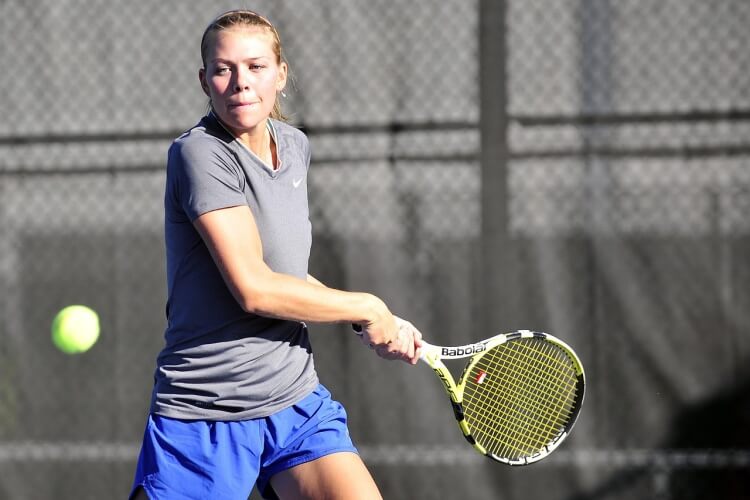When our school district developed our “Injury Prevention Initiative” a little over two years ago (see November, 2011 article in pelinks4u, “An Injury Prevention Initiative Based Upon the Functional Movement Screen [FMS]”), little did we realize the impact it would make. We initiated this injury prevention program by mandating all athletic teams incorporate the recommendations into their warm-up routines. Since then, we have cut the number of surgeries resulting from athletic injuries by over 40%.

The results were so dramatic that I’m now hounding our district’s physical education specialists to begin using these functional movement exercises in all of our elementary and middle school physical education classes. My thinking is based upon the huge impact Gray Cook and Lee Burton have made with their Functional Movement Screen and the exercises designed to enhance FMS scores and athletic performance.
This fall, I came across an article and video, “Yes, kids are stars on the playing field, but can they do a push-up?” (Nancy Cambria, St. Louis Post-Dispatch, November 21, 2013). I was pleasantly surprised by what was in the article and attached video, and started looking at what’s happening in our society to our youth-their activity levels, outdoor time, and obesity levels. The focus of Cambria’s article was:
“In a nutshell, trainers want to know whether these kids really know how to properly and safely move, and later, can they add strength to those established movements? It’s all part of a growing push among trainers and others in fitness fields to get schools, parents, coaches and kids back to basics with physical fitness. Instead of focusing primarily on acquiring fitness through organized youth sports – an exploding business with many well-meaning but poorly trained coaches – they want parents and kids to refocus and acquire proper movement skills beginning as early as kindergarten and progressing all the way through high school.” (Note phrases and terms: “properly and safely move,” “back to basics with physical fitness,” “well-meaning but poorly trained coaches,” and “beginning early…progressing all the way through high school.”)
This was exactly what I was encouraging our own district’s physical education specialists to do. Cambria also referenced an article published in the NSCA Journal by Larry Meadors, “Practical applications to long-term athletic development.” In this article, Meadors comments:
“To date, little has been done to provide youth coaches with knowledge of how to teach and develop proper movement techniques. Coaches are left often with an excessive number of competitions, incomplete athlete development, and an emphasis on sports-specific skills only. Many athletes suffer systemic overuse injuries caused by improper training and repeated sub-maximal repetition stress, followed by inadequate recovery.”
One of my college professors taught me that muscular strength was the basic building block for sports skills and shared this axiom: “The stronger one is, the faster they will learn a motor skill and the better they will be at that skill.” As physical education majors, we were taught to teach skills to our students so they would be good enough to enjoy playing a particular sport. Even though we started our classes with basic fitness and did fitness testing, we did not focus on “functional movements” or “functional movements with strength.”
When I think back as to why so many students failed to become more skillful, I can now see they lacked general strength and the strength needed to perform basic functional movements. Today, I continue to be amazed when visiting athletic practices at how many young athletes cannot do a full squat (no weight) with their heels on the ground and their spine in the neutral position-one of the more critical basic functional movements.
I believe it’s time for physical educators and coaches to rethink what they are teaching their students and athletes. We should be emphasizing fundamental, functional movements for our students much more than we are today. And this emphasis should begin with the youngest students and continue through high school age. I’m convinced that if students lack adequate muscular strength and cannot perform basic functional movements, they won’t be prepared to perform at an acceptable level of ability in sports activities. And if they can’t perform sports well they’re unlikely to continue playing these sports as teens and for a lifetime.
What are we achieving by emphasizing playing more games (as I was taught to teach physical education) rather than learning functional movements and developing strength? I think we are risking self-defeating our ultimate goals in teaching physical education and coaching sports. We are failing to mentally condition our students to live healthy and active lifestyles. Too many physical educators and coaches are guilty of “cart-before-the-horse” thinking.
Eric Lay’s video, “Conditioning to Reduce Sports Injuries,” Larry Meadors’ article, and my experience in applying the FMS in developing our injury prevention initiative, leads me to believe that now is the time for an instructional paradigm shift in physical education and especially in coaching sports.
